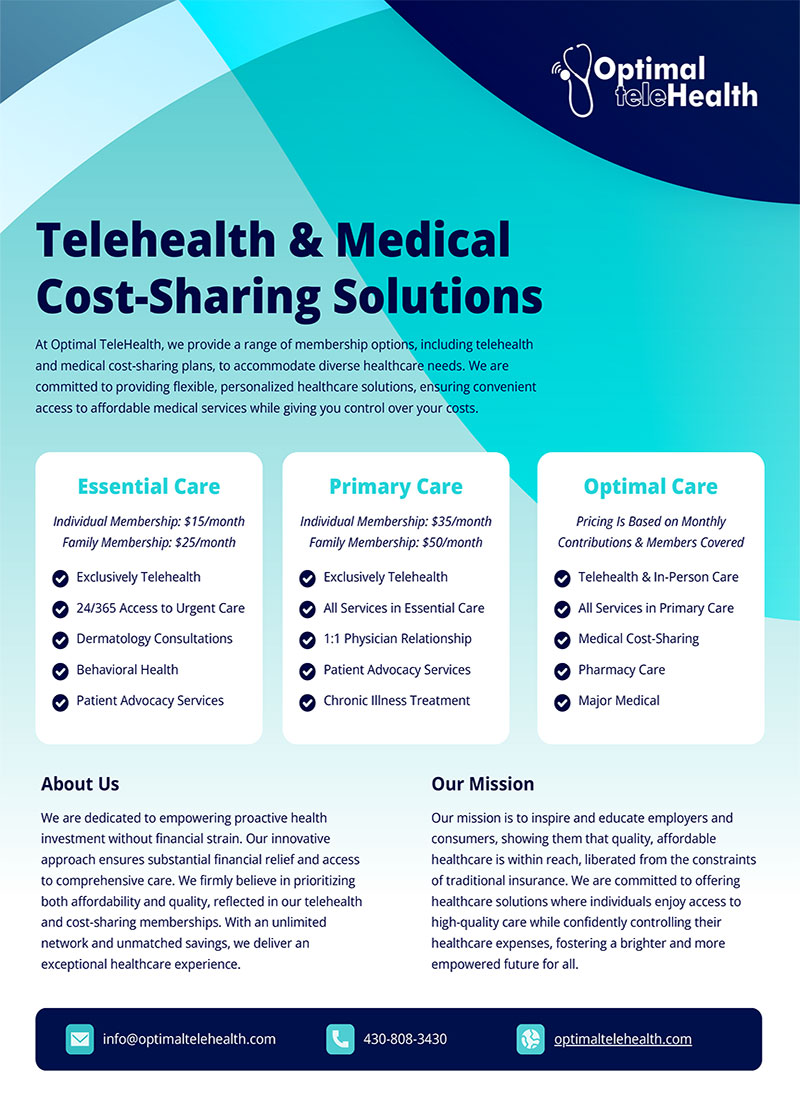Virtual Healthcare: What Is It, How It Works, And Benefits For Family Care
Key Takeaways:
- What is virtual healthcare?
- How does virtual healthcare work?
- What are the benefits of virtual healthcare?
Virtual Healthcare, Telehealth: History & Evolution
Telehealth, or also known as virtual healthcare or telemedicine, has evolved significantly, especially in the past two decades as states relaxed restrictions, reducing the liability for doctors using telemedicine to diagnose and treat patients remotely. Advancements in communication technology, particularly smartphones and video conferencing, have had the greatest impact on the practical application of telemedicine.
Driven by these advancements, telemedicine quickly became a consumer service, enabling average Americans to spontaneously consult with doctors when the need arose. Among the first to commercialize telemedicine was Teledoc, a North Texas based provider of telemedicine services. Teledoc became a publicly traded company in 2015 and now distributes their services in 175 countries around the world.
As telemedicine grew in popularity, additional services were added using the same remote communications technology. Services from medical specialists and mental health services are common, but in our current market, you may find physical therapy services, dental services and even healthcare consulting for household pets. With the inclusion of these various services, telemedicine evolved to be “telehealth”.
Although Medicare had approved the utilization of telemedicine or telehealth for patients living in remote areas, the government had largely been silent on the subject until the COVID pandemic, at which time various healthcare departments within the government began promoting telehealth as a means of obtaining medical services without personal visit to a doctor’s office. This resulted in a spike in the use of telehealth services and a broader acceptance of the viability of the process.
How it Works
Telehealth services can be acquired in two different ways, the first on a pay-per-call basis, and the other on a membership plan that allows spontaneous access 24/365 with no additional charges other than prescriptions, if prescribed. It’s common for pay-per-call consultations to cost between $50 and $75, where monthly memberships can be obtained in the $12 to $15 per month range, and those memberships typically include additional telehealth services such as behavioral health counseling.
There are countless companies around the nation marketing telehealth services, but only a few who actually originate those services. Origination providers are those companies who developed the software technology and assembled the pool of doctors who are licensed to practice in the various 50 states. These originators sell their services directly or through brokers and resellers under their own brand and they also allow resellers to white label their services for sale under the reseller’s brand. When subscribing to membership with a telehealth provider, it’s always helpful to know the source of their service.
Benefits of Telehealth
When given the choice of scheduling a doctor’s appointment six weeks in advance and paying $150 to $200 for a consultation or picking up the phone and consulting with a doctor within a two-hour window of time for an annual cost that’s less than one trip to the doctor’s office, the latter seems to be the most logical choice.
Access to primary care medical services is under-utilized in America compared to other developed countries. As a result, the United States ranks 36th among the healthiest countries in the world. Access to primary care medical services is inconvenient and expensive because there is a major national shortage of primary care physicians, and the problem is projected to get worse.
The U.S. Center for Disease Control has researched the service received during an in-person consultation and a remote telehealth consultation and determined there is no distinguishable difference in level of service. Telehealth doctors are limited to diagnosing and treating about 50 common conditions because they have no ability to use expanded diagnostics like lab tests or imaging services. However, when the telehealth patient has access to the same doctor for every consultation, that doctor can order and receive the results on extended diagnostic test, enabling them to diagnose and treat up to 1,500 conditions. This effectively eliminates up to 90% of those inconvenient and expensive trips to the doctor’s office.
- Convenience: Access to healthcare services from the comfort of your home, eliminating the need for travel and reducing waiting times.
- Cost-Effectiveness: Lower consultation fees compared to in-person visits and savings on transportation and other related expenses.
- Accessibility: Enhanced access to medical care for people in remote or underserved areas, and for those with mobility issues.
- Flexibility: Availability of healthcare services outside of regular office hours, including weekends and holidays.
- Continuity of Care: Easier follow-up appointments and continuous monitoring of chronic conditions.
- Reduced Exposure: Lower risk of exposure to infectious diseases by avoiding crowded healthcare facilities.
- Expanded Services: Access to a wide range of services including mental health, physical therapy, and specialist consultations.
- Efficiency: Streamlined communication between patients and healthcare providers, and faster access to medical records and test results.
- Patient Satisfaction: Increased patient satisfaction due to the ease and efficiency of virtual consultations.
Conclusion
Employers will find telehealth services an attractive option for employees without health insurance, and when telehealth services are combined with medical cost sharing, it’s a superior alternative to traditional health insurance for most employees.
Telehealth can solve the problem of having access to high-quality healthcare and empowerment to control the cost. You can learn more about how virtual healthcare how
For additional information, go to fill out our contact form for a consultation today!
Download the eguide to learn more about our healthcare membership offerings!





